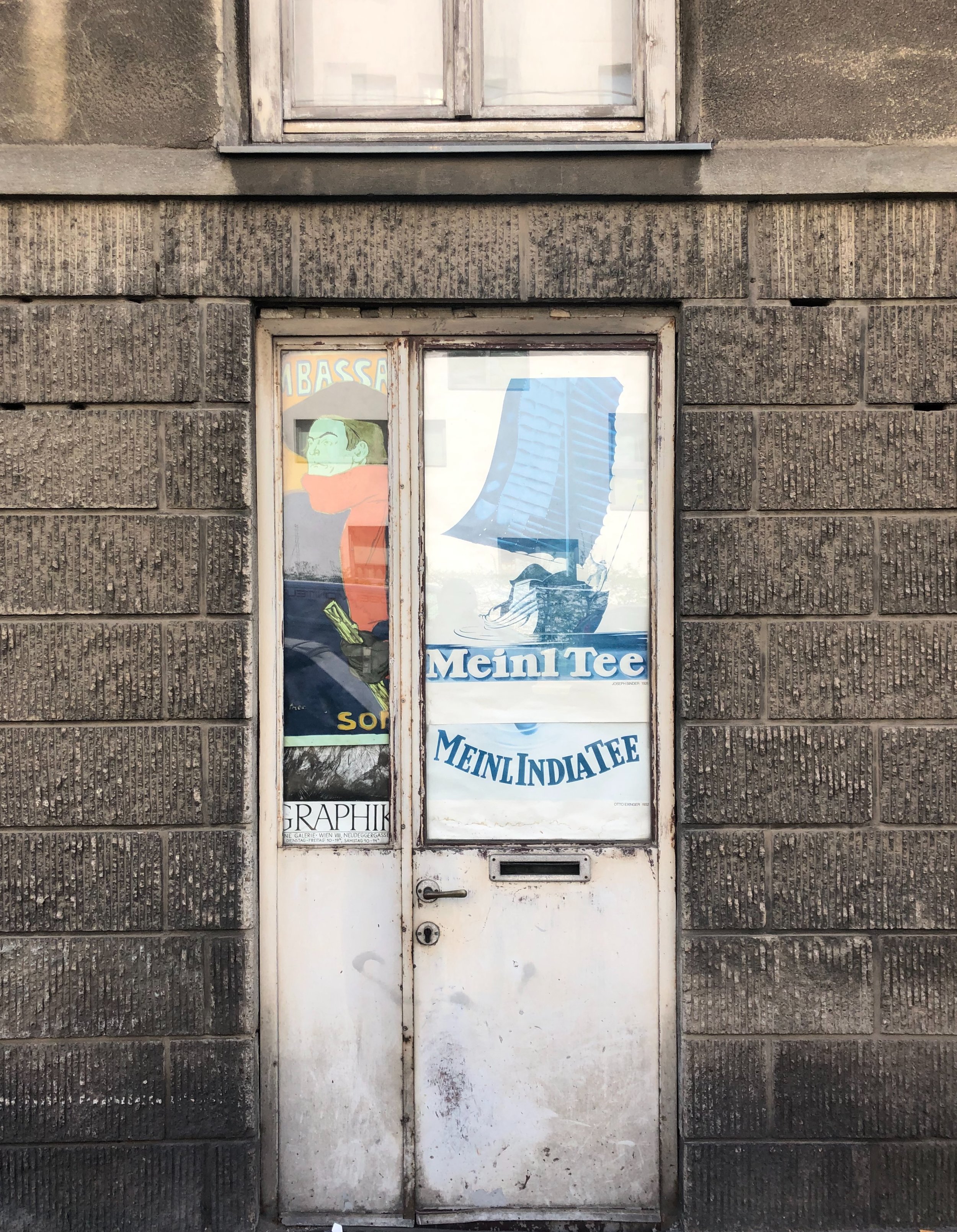For the past week I’ve been an international dog-sitter to a cute little guy named Ferdinand. On our daily walks through Vienna, I started to notice all the faces in the walls.
Ferdinand, the opposite of my dog. He likes to sleep in, bark loudly at other dogs and stop frequently on walks, but cuddles lovingly.
It might sound crazy, but do you ever have that feeling that you are being watched? In Vienna, you always are.
Dramatic faces built into the walls above entryways, windows and adorned to arches or rooftops are known as mascarons. Initially, they were designed to prevent evil spirits from entering the premises, hence some of the frightening expressions.
At times I felt like I was walking amidst a collection of life sized dollhouses. You don’t have to walk far to notice that Vienna’s architecture is a rich range of new and old dichotomies; from Baroque-era designed architecture to minimalist 20th century designs.
Architect, Adolf Loos’s smooth and clear surfaced building designs are a stark contrast to the elaborately ornamented and “well dressed” buildings surrounding them; earning the nickname “houses without eyebrows.”
A collection of dramatic faces
According to Jackie Craven’s guide to architecture in Vienna, “wealthy aristocratic families like the Liechtensteins may have first brought the ornate Baroque style of architecture (1600-1830) to Vienna.”
Of course there is a wide variety of architectural influences that creates the aesthetic of walking amongst “pastel painted dollhouses.” There are the Neoclassical, Jugendstil (Art Nouveau), Romanesque and Gothic architectural influences; as well as the notable works by Austrian architect, Otto Wagner.
A collection on entryways
The presence of mascarons exist throughout many of these architectural styles with depictions of beautiful women, gods and goddesses to grotesque demons and animals, usually lions. From symbolism to pure decoration, these dramatic expressions to emotionless, mask like faces are around every corner.
When visiting the Belvedere Palace, examples of Baroque architecture can be found inside and out. The faces in the walls are seen in grandiose theatrics of tricky mirror walls, altered perspectives and illuminated surfaces with dramatic sense of light or chiaroscuro techniques.
Then of course there are the faces on the wall, added by graffiti artists. Before visiting the city, I knew of the famous artistic geniuses linked to the iconic Vienna Secession, like painters, Gustav Klimt and his protégé, Egon Schiele. And of course the musical classics like Beethoven and Mozart. What I didn’t expect to find was the street art.
Even the exhibition, “Vienna 1900, The Birth of Modernism,” at the Leopold Museum alludes to the history of Vienna’s street art or the “art gallery for the poor man.” I was surprised to find that Vienna’s street art dates back to the Vienna Secession posters. In fact art critic, Ludwig Hevesi coined the slogan, “Kunst auf der Straße” (Art in the Streets) with his article about walking through the streets of Vienna published in 1899. This saying can also be found transcribed on the facade of the Secession building.
“Posters had been established as an advertising tool since the 1880s, but they became an interesting form of an artistic point of view with Henri de Toulouse Lautrec’s color lithograph. Access to art was no longer reserved to an elite interested in culture, which made posters a potential means of an aesthetic education.”
- excerpt from Vienna 1900 Birth of Modernism exhibition
History lessons provided by adventures with Ferdinand in the city. Turns out dog walking can be quite educational if you want it to be.




















